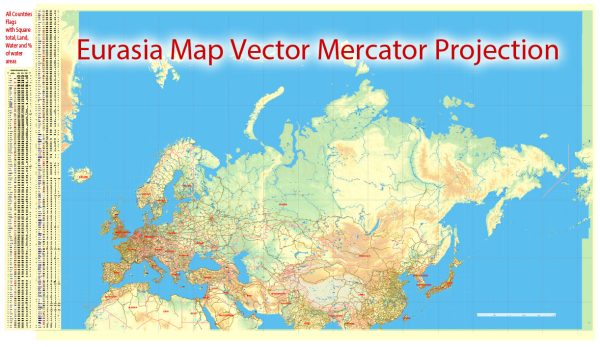The political history of Europe and Asia is vast and complex, shaped by a multitude of cultures, civilizations, and geopolitical events. Given the broad scope of both continents, I’ll provide a brief overview of key historical developments in each region:
Europe:
- Ancient Greece and Rome (c. 800 BCE – 476 CE):
- Birthplace of democracy in Athens and the Roman Republic.
- Rome’s expansion led to the formation of a vast empire.
- Middle Ages (476 – 1500):
- Feudalism dominated, with kingdoms, fiefdoms, and the Catholic Church.
- The Byzantine Empire preserved Greek and Roman knowledge.
- The Crusades saw European attempts to reclaim the Holy Land.
- Renaissance (14th – 17th centuries):
- Rebirth of art, culture, and learning.
- Shift from feudalism to early capitalism.
- Reformation and Wars of Religion (16th – 17th centuries):
- Protestant Reformation challenged the Catholic Church.
- Wars, including the Thirty Years’ War, resulted in significant political changes.
- Enlightenment (17th – 18th centuries):
- Intellectual movement emphasizing reason, science, and individual rights.
- Influenced political revolutions and the development of constitutional monarchies.
- French Revolution and Napoleonic Era (1789 – 1815):
- Overthrow of the monarchy, rise of radical ideologies.
- Napoleon’s conquests reshaped European borders.
- 19th Century:
- Industrial Revolution transformed economies.
- Rise of nationalism and the unification of Italy and Germany.
- Imperialism and colonial expansion.
- World Wars (1914 – 1945):
- World War I and its aftermath led to political restructuring.
- Rise of totalitarian regimes, fascism, and Nazi Germany.
- World War II and the subsequent Cold War divided Europe.
- Post-WWII and European Integration:
- Formation of the European Union to promote economic and political cooperation.
- The end of the Cold War led to the reunification of Germany.
Asia:
- Ancient Civilizations (c. 3000 BCE – 500 CE):
- Indus Valley, Mesopotamia, and ancient Chinese civilizations.
- Development of early philosophies and religions.
- Silk Road and Cultural Exchange (2nd century BCE – 14th century CE):
- Trade routes connected Asia with Europe and Africa.
- Flourishing of arts, sciences, and religious traditions.
- Mongol Empire (13th – 14th centuries):
- Genghis Khan and successors established one of the largest empires in history.
- Imperial China and Feudal Japan (14th – 19th centuries):
- Ming and Qing dynasties in China.
- Feudal system in Japan, including the Edo period.
- Colonialism and Modernization (19th – early 20th centuries):
- European colonization in Southeast Asia and India.
- Meiji Restoration in Japan led to rapid modernization.
- World War II and Independence Movements:
- Japanese occupation in many Asian countries.
- Post-war independence movements, including India.
- Cold War and Communist Revolution (mid-20th century):
- Communist revolutions in China, Vietnam, and Korea.
- Cold War tensions in the region, including the Korean and Vietnam Wars.
- Post-Cold War Era and Economic Rise (late 20th century – present):
- Economic growth in East Asia, including China’s rapid rise.
- Regional conflicts and geopolitical tensions persist.
These overviews are necessarily concise, and each region has a rich and diverse history with numerous specific events and nuances. Additionally, contemporary developments continue to shape the political landscape in both Europe and Asia.


 Author: Kirill Shrayber, Ph.D.
Author: Kirill Shrayber, Ph.D.